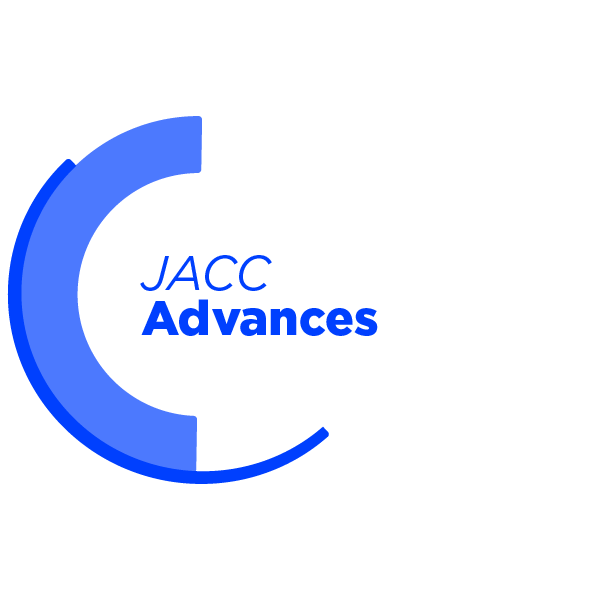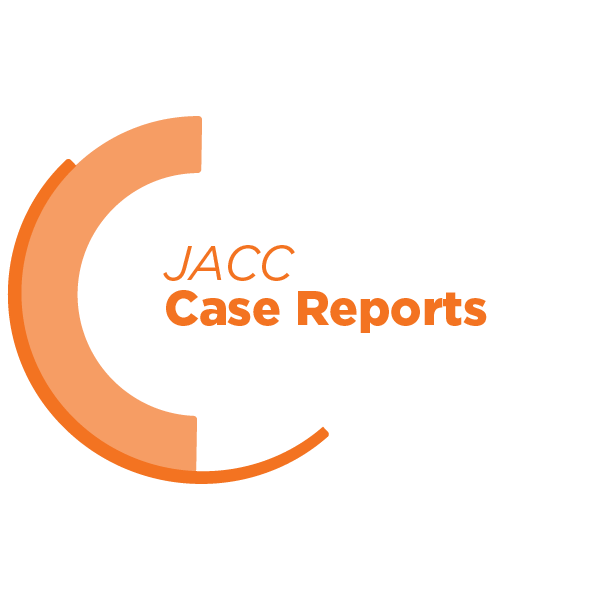JACC in a Flash | JACC at AHA 2024; Rural America Faces Higher CV Death Risk; More
Featured topics and Editors' Picks from all of ACC's JACC Journals.

A new collaboration between JACC and the U.S. Food and Drug Administration (FDA), will give cardiovascular clinicians a voice in shaping priorities for postmarket evidence generation in cardiovascular disease (CVD).
"Cardiovascular clinicians are steadfast advocates for their patients and deeply knowledgeable about the gaps in research and medical care that prevent patients from achievable better outcomes," write JACC Editor-in-Chief Harlan M. Krumholz, MD, SM, FACC, U.S. FDA Commissioner Robert M. Califf MD, MACC, and Haider J. Warraich, MD, senior advisor for chronic disease to the FDA commissioner, in an Editor's Page. "Yet, clinicians are often sidelined or not even engaged in critical questions that shape national health care and research priorities."
Under the new collaboration, which will initially focus on cardiovascular disease, clinicians are invited to submit high-priority unanswered questions about FDA-approved medical devices. Questions can range from issues frequently seen in clinical practice or causing uncertainty in the postmarket setting, to how to reduce the dangers of unhealthy diets and tobacco products.
"Clinicians encounter critical questions every day that lack evidence-based answers," says Krumholz. "At JACC, we're working to ensure the clinician voice is heard and influences the research agenda, turning real-world challenges into initiatives to find answers."
According to Califf, Warraich and Krumholz, examples of postmarket questions needing answers could involve rare events, treatment combinations, safety and effectiveness in understudied populations, etc.
"There is concern that a chasm is opening in medicine between clinical care and clinical research at a time when it is clear that research and practice need to be integrated to generate evidence supporting patient and population health decisions," they write. The FDA and JACC are inviting question submissions through Feb. 14. Click here for submission details.
Click here for the full Editor's Page.
Click here to read an FDA perspective from Warraich, Califf, et al., also published in JACC, outlining a roadmap for overcoming the key gaps preventing digital health technologies from meeting their full potential in assisting with the prevention, early detection and better management of cardiometabolic disease.

JACC Journals were a beacon for late-breaking science, key analyses of pivotal trials (read more in this month's cover story) and evidence-based research surrounding new devices and therapies during AHA 2024 in Chicago. Highlights from two studies looking at the impact of cardiovascular mortality across the rural U.S., and the impact of sedentary behavior on developing atrial fibrillation are below and more. Click here for all the studies simultaneously published in JACC Journals during AHA 2024,along with article illustrations, trial infographics, author interviews and Journal Club materials.

People who live in rural areas are dying from cardiovascular disease at a much greater rate than those living in urban areas, according to a report showing that disparities in mortality are greater among younger adults.

More time spent sitting, reclining or lying down during the day may increase the risk of cardiovascular disease and death, according to a study by Ezimamaka Ajufo, MD, et al., examining data submitted from a wrist-worn triaxial accelerometer that captured movement over seven days from 89,530 study participants of the UK biobank (average age 62 years, 56.4% women).

Insights on emerging topics such as the use of artificial intelligence (AI)-enabled left atrial volumetry in coronary artery calcium scans to predict atrial fibrillation; the role of treating hospitals in facilitating cardiac rehabilitation; the association between adjunctive systemic sirolimus therapy and the frequency of pediatric pulmonary vein stenosis interventions; the effect of pregnancy on all-cause mortality in patients with hypertrophic cardiomyopathy; and the efficacy of SGLT2 inhibitors on patients with transthyretin amyloid cardiomyopathy, were among the hot topics presented at AHA 2024 and published in JACC: Advances. Click here for more details and quick links to the studies.


"In an era where cardiovascular science is rapidly advancing, the path to progress increasingly depends on collaboration," write JACC Editor-in-Chief Harlan M. Krumholz, MD, SM, FACC, and JACC: Clinical Electrophysiology Editor-in-Chief Kalyanam Shivkumar, MD, PhD, FACC, in a joint Editor's Page announcing a new effort to create a unified editorial team. "This new collaborative model allows us to minimize overlap, streamline decision-making, and ensure that each paper is guided by the best-suited experts, regardless of the journal in which it is ultimately published," they write. Click here to learn more and visit JACC.org to access the most recent issues of both journals.
Editor's Top Picks For 2024

Jian'an Wang MD, PhD, FACC
Editor-in-Chief, JACC: Asia
Epidemiology and Burden of Heart Failure in Asia
This state-of-the-art review provides insights for reducing the burden of heart failure and improving patient prognosis by summarizing available information on its occurrence, etiology, risk factors, outcomes and management in Asia.
This statement authored by a multidisciplinary group offers practical advice on the frequency of echocardiographic follow-up, intervention thresholds for asymptomatic and symptomatic patients, and the choice between TAVI and SAVR, and more.
The risk of bleeding associated with antithrombotic therapy after transcatheter structural heart interventions has long been a concern, especially for the Asian population. This State-of-the-Art review identifies the important issues and summarizes the current status of postoperative antithrombotic therapy and assessment of the bleeding risk following transcatheter structural heart interventions such as transcatheter aortic valve replacement, transcatheter edge-to-edge repair, and transcatheter left atrial appendage occlusion.
Sex Differences in the Association Between Depression and Incident Cardiovascular Disease
This research aimed to examine the correlation between depression and the occurrence of cardiovascular disease events, with a focus on potential gender disparities. Utilizing the JMDC Claims Database, a retrospective analysis was conducted involving over 4 million participants aged 18 to 75 with no history of cardiovascular disease or renal failure. The primary outcome was a composite endpoint including myocardial infarction, angina pectoris, stroke, heart failure and atrial fibrillation. Key findings showed a higher hazard ratio for the composite cardiovascular disease endpoint in women compared to men, as well as individual components of the endpoint being more strongly associated with depression in women. This study suggests that there is a need to better understand the potential sex-specific factors underlying the relationship of depression with incident cardiovascular disease.
Life's Essential 8 in Relation to Cardiovascular Disease and Mortality in Individuals With Diabetes
Life's Essential 8 (LE8) was developed to measure and monitor cardiovascular health (CVH), which is calculated based on 8 most important predictors of CVH: diet quality, physical activity, BMI, smoking status, sleep health, blood pressure, blood glucose and blood lipids. Utilizing data from the Kailuan prospective cohort, this study investigated the associations of LE8 score with risk of subsequent cardiovascular disease incidence, including heart disease and stroke, and total mortality among participants with type 2 diabetes (T2D). Over a 14-year follow-up period, participants' diet, lifestyle and health metrics were regularly assessed every two years. The findings indicated that higher LE8 score was linked to a reduced risk of cardiovascular disease, heart disease, stroke and mortality. In addition, greater increase in LE8 score after diabetes diagnosis over time was significantly associated with a lower risk of cardiovascular disease and total mortality. These findings highlighted the potential of LE8 score as a personalized tool for promoting cardiovascular health and overall well-being in individuals with T2D.

Douglas L. Mann, MD, FACC
Editor-in-Chief, JACC: Basic to Translational Science
Intrinsic and Extrinsic Contributors to the Cardiac Benefits of Exercise
This review provides insights from mechanistic and preclinical studies of exercise adaptation that highlight the value of exercise as a platform for discovering potential therapeutic targets to improve cardiovascular health.
This clinical study adds an important new insight into the importance of CHIP-induced inflammation in the pathogenesis of heart failure.
The prevalence of coronary artery disease (CAD) is higher in men than in women; however, the underlying explanation for this difference is poorly understood. This study examined endothelial function in patients undergoing coronary arteyr bypass grafting. The major findings were that internal thoracic arteries from postmenopausal women had a better endothelial function than in men. At a molecular level, senescence and inflammation-specific signaling pathways genes were overrepresented in male endothelial cells, whereas extracellular matrix and metabolism-specific pathways were overrepresented n female endothelial cells. This suggests that "inflammaging" is present in male endothelial cells. These studies are of potential clinical importance given that new drug therapies are emerging (e.g., senolytics) to treat senescence-associated endothelial dysfunction in humans.

Bonnie Ky, MD, MSCE, FACC
Editor-in-Chief, JACC: CardioOncology
This first-ever JACC: CardioOncology expert panel initiates a three-part series evaluating the evidence base for the cardiovascular care of patients before, during and after treatment with cardiotoxic cancer therapies.
Featured in our Social Determinants of Health Special Focus issue, the first issue of its kind in cardio-oncology, this large cross-sectional study highlights the significance of evaluating and managing neighborhood environmental factors of patients living beyond cancer and integrating interventions at the neighborhood level so clinicians can contribute to more holistic patient care approaches, potentially leading to improved outcomes.
This cohort study of 861 patients who underwent autologous hematopoietic cell transplantation for lymphoma revealed that CHIP was highly prevalent with 21.7% of the cohort having at least one CHIP variant. Moreover, CHIP was associated with an increased risk of heart failure and non-relapse mortality. Overall, this study highlights the importance of CHIP as a potential biomarker in this at-risk population and the need to identify strategies to mitigate this risk.
In an administrative database study of 933 patients, SGLT2 inhibitor exposure was associated with a decreased risk of heart failure hospitalizations in patients who received anthracycline chemotherapy. This study raises critically important hypotheses and motivates additional science in the study of SGLT2 inhibitors as a cardioprotectant in cancer therapy associated cardiovascular disease.

Mohamad Alkhouli, MD, FACC
Deputy Editor, JACC: Cardiovascular Interventions
This randomized study of 400 patients demonstrated the noninferiority of AI-assisted quantitative coronary angiography vs. optical coherence tomography guided PCI, highlighting AI's potential to enhance PCI outcomes in cath lab practices.
This analysis of >150,000 patients in the U.S. who underwent transcatheter aortic or mitral valve interventions revealed that greater baseline tricuspid regurgitation correlated with worse health status and clinical outcomes, underscoring critical considerations for managing multivalve disease, especially considering current and emerging transcatheter valvular therapies.
First Experience With Amulet in the United States: Early Insights from EMERGE LAA Postapproval Study
This study is the first to document clinical outcomes of the newly approved Amulet left atrial appendage occlude (LAAO) by in the U.S. The findings emphasize the critical role of the learning curve in optimizing outcomes with the Amulet device for LAAO.
Below-the-Knee Endovascular Revascularization: A Position Statement
Below-the-knee arterial disease is highly prevalent in chronic limb-threatening ischemia, a severely debilitating and life-threatening condition. Despite the challenges posed by complex anatomical and lesion characteristics, numerous treatment options are available. This consensus document addresses patient selection and provides expert guidance on effective techniques to navigate the challenges of this complex disease.
This large observational study highlighted site-level variability in TAVR and mitral valve transcatheter edge-to-edge repair (MVTEER) outcomes across the U.S., revealing that excellence in one transcatheter procedure does not always align with optimal outcomes in another at the same site.
More Quick Picks

Kalyanam Shivkumar, MD, PhD, FACC
Editor-in-Chief, JACC: Clinical Electrophysiology
Smoking Cessation and Incident Atrial Fibrillation in a Longitudinal Cohort
Prediction of Sudden Cardiac Death With Ultra-Short-Term Heart Rate Fluctuations
Mapping and Ablation of Premature Ventricular Complexes State of the Art

Gilbert H. L. Tang, MD, MSc, MBA, FACC
Editor-in-Chief, JACC: Case Reports
The Right Ventricular Moderator Band: From Leonardo da Vinci's Drawings to Current Cardiac Imaging
The Zero Calcium Score Paradox
A Medical Resident's Dilemma: Clinical Proficiency vs. Research Publication
First in Human Substernal Lead Extraction
Pericardiocentesis in Severe Pulmonary Arterial Hypertension Guided By a Pulmonary Artery Catheter
Clinical Topics: Arrhythmias and Clinical EP, Cardiac Surgery, Cardiovascular Care Team, Diabetes and Cardiometabolic Disease, Heart Failure and Cardiomyopathies, Invasive Cardiovascular Angiography and Intervention, Valvular Heart Disease, Atrial Fibrillation/Supraventricular Arrhythmias, Aortic Surgery, Cardiac Surgery and Arrhythmias, Cardiac Surgery and Heart Failure, Cardiac Surgery and VHD, Acute Heart Failure, Interventions and Structural Heart Disease
Keywords: Cardiology Magazine, ACC Publications, AHA24, AHA Annual Scientific Sessions, Socioeconomic Factors, Health Services Accessibility, Insurance, Insurance Coverage, Sedentary Behavior, Atrial Fibrillation, Sitting Position, Research, Cardiovascular Diseases, United States Food and Drug Administration, Heart Failure, Transcatheter Aortic Valve Replacement, Cardio-oncology, Aortic Valve Stenosis
